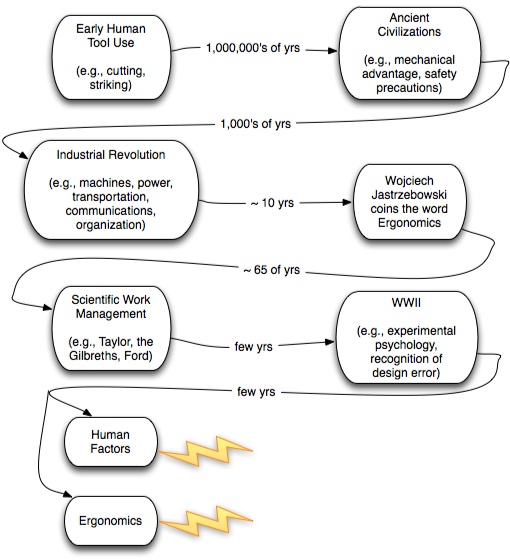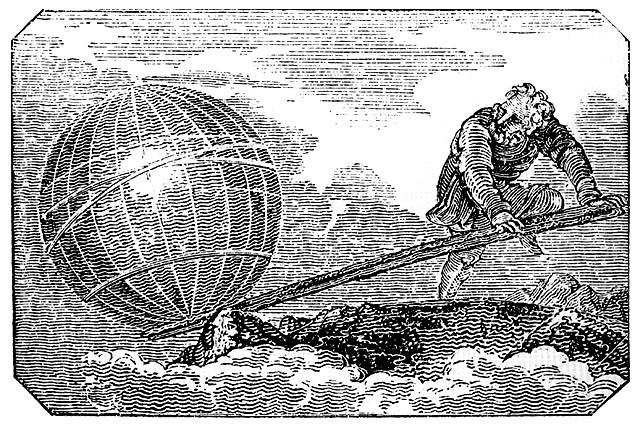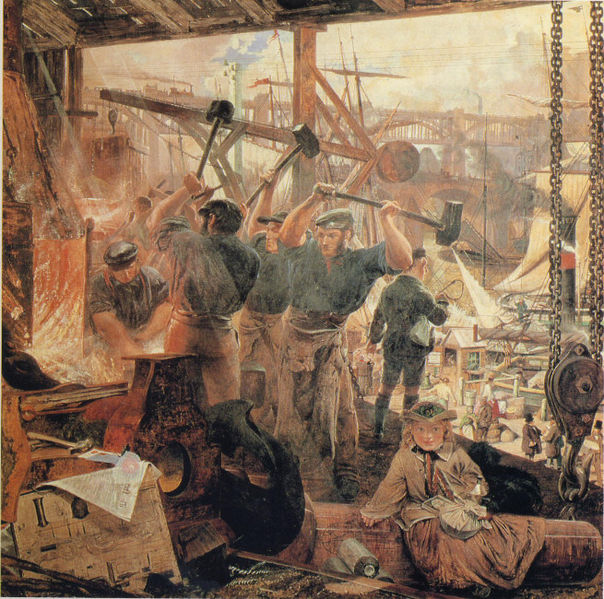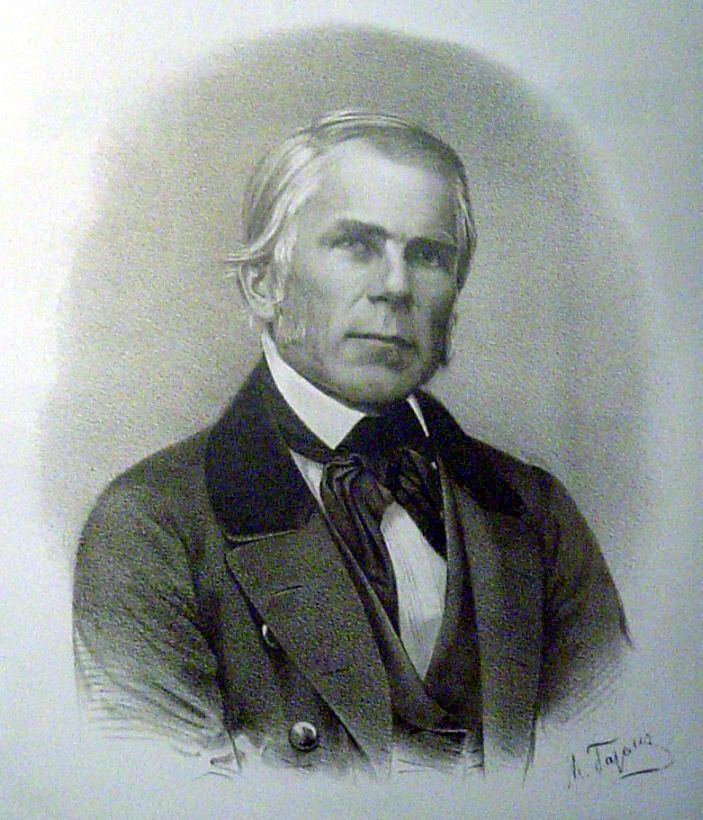Last week Ergoweb republished an article from the early days of The Ergonomics Report™ which referenced the man who coined the word Ergonomics, Wojciech Jastrzebowski (Revisiting the Roots of Ergonomics). It spurred some discussions about the long — or short — history of ergonomics, depending on how you look at it. Jastrzebowski coined the term in 1857, soon after a period of rapid development that has since come to be known as The Industrial Revolution, but was that really the beginning of what we think of as ergonomics in modern times?
In a broad sense, ergonomics is as old as humankind, or at least some point long ago in human history. Many trace its origins to that day when the first human realized that a sharp rock or a pointy stick was useful as a tool. Whoever it was, whenever it was, found a way to improve upon human capabilities by creating a tool. Sometimes those tools were used to improve human life, such as gathering and preparing food, and sometimes they were used to destroy human life, such as in war.
Using early toolmakers as a starting point, the following diagram is an abridged history of ergonomics. All artistic and logical shortcomings, and any inaccuracies that may follow are mostly mine, though I did consult a few references, which you can find at the end of this article. In many ways, the history of ergonomics mirrors the history of human progress, with all the starts and stops along that path.

This portion of the history brings us to the late 1940's, when, by my understanding, some diversions began to take shape. At the time, the diversions weren't so much based on theoretical differences, but instead on terminology. However, over the 65 or so years since, that rift has begun to take on theoretical and practical proportions. More on this, below.
First, here's a quick overview of key points from the above diagram.
 Early Human Tool Use: Millions of years ago. Depending on who or what you believe, the first evidence of human tools dates back perhaps as far as 2.6 million years ago. Maybe even more, maybe much less. Our tools have become much more sophisticated since, but most of that development has occurred in the past 5,000 to 7,000, a tiny blip on the geological time scale.
Early Human Tool Use: Millions of years ago. Depending on who or what you believe, the first evidence of human tools dates back perhaps as far as 2.6 million years ago. Maybe even more, maybe much less. Our tools have become much more sophisticated since, but most of that development has occurred in the past 5,000 to 7,000, a tiny blip on the geological time scale.

Ancient Civilizations: Thousands of years ago. Again, depending on who and what you believe, principles of ergonomics are evident in the practices of ancient Greek, Egyptian and Roman societies, and likely others. This is when things like pulleys, wheels, safety systems/precautions and other advances occurred (or at least when they were first documented). See, for example, this description of ergonomics principles in ancient Greece.

Industrial Revolution: Hundreds of years ago. This era, from the mid-1700's to the mid 1800's, was a time of great industrial and economic change for many countries and societies. It's characterized by people shifting from rural, predominantly agricultural activities to one dominated by advancements in machines, transportations, power and mass industrial production techniques. Populations swelled in cities, and work and production became more organized.

Wojciech Jastrzebowski coins the word Ergonomics: 1857. At the tail end of the Industrial Revolution, Jastrzebowski, a Polish scholar, wrote and published a two-part series in a journal of that time describing what he termed "ergonomics," using such statements as "… how we should live to make our lives as bountiful as possible at the least expenditure of toil and with the greatest inner contentment, bringing forth fruit for our own and for the common good." His broad, sweeping statements, though sometimes odd by modern standards, really do lay an interesting foundation for what we recognize as ergonomics. For more, read Revisiting the Roots of Ergonomics.
<img alt="Scientific Management example from Germany" src="https://ergoweb.com/images/article/Bundesarchiv_Bild_183-19361-006,_Chemnitz,_Normierung_im_Fr
This article originally appeared in The Ergonomics Report™ on 2012-11-27.
